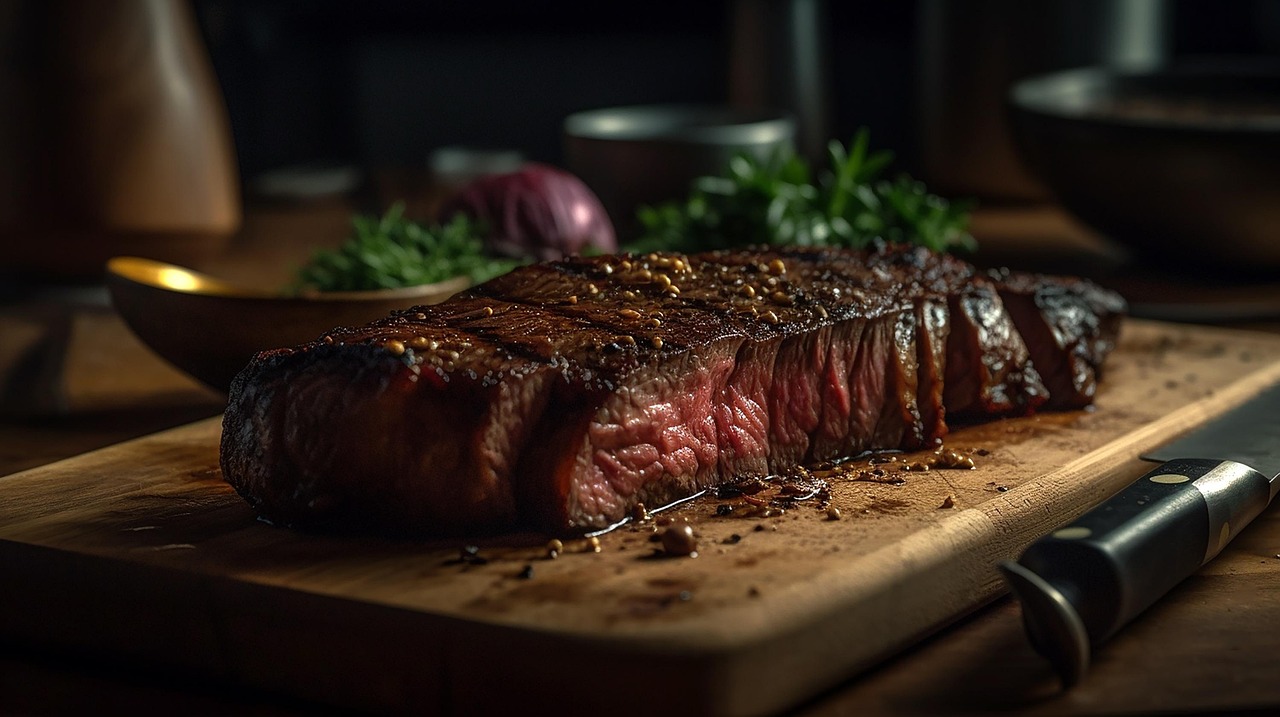Cooking the perfect steak is an art form, one that combines precision, technique, and a bit of passion. Whether you prefer it rare, medium-rare, or well-done, mastering the art of steak cooking can elevate your culinary skills and provide a delicious meal that’s sure to impress. From selecting the ideal cut of meat to knowing the exact moment your steak reaches the perfect doneness, this step-by-step guide will help you achieve steak perfection every time.
Choosing the Right Cut of Steak
The journey to the perfect steak begins with choosing the right cut of meat. Different cuts offer varying levels of tenderness, flavor, and cooking methods. Popular cuts include ribeye, filet mignon, T-bone, and sirloin. Ribeye is known for its rich marbling, which makes it incredibly flavorful and juicy, while filet mignon is renowned for its tenderness. T-bone steaks offer a combination of tenderness and flavor with the bonus of two cuts in one: the tenderloin and the strip. Sirloin, while leaner, is still flavorful and an excellent option for those who prefer a slightly firmer steak.
When selecting your steak, look for meat that is well-marbled with fat, as this fat will melt during cooking, infusing the meat with flavor and helping to retain moisture. Freshness is key, so opt for high-quality cuts from a reputable butcher or grocery store to ensure the best results.
Preparing Your Steak for Cooking
Once you’ve selected your steak, preparation is crucial for achieving the perfect cook. Start by letting the steak come to room temperature before cooking—this ensures even cooking throughout the meat. Season your steak generously with salt and pepper to enhance the natural flavors. For an added layer of complexity, you can also use garlic powder, onion powder, or a dash of dried herbs such as rosemary or thyme.
While many prefer simple seasoning, marinating your steak for a few hours can infuse additional flavors into the meat. If you choose to marinate, be mindful of the acidity in your marinade, as overly acidic ingredients can break down the meat and make it tough.
Mastering Cooking Techniques for a Perfect Steak
Searing the Steak
Searing is the technique of cooking the steak over high heat for a short period to create a flavorful crust. A well-seared steak offers a deep, caramelized exterior that contrasts beautifully with the juicy interior. Begin by heating a heavy skillet or cast-iron pan over medium-high heat, and add a small amount of oil with a high smoke point, such as vegetable or grapeseed oil. Once the oil is shimmering, carefully place the steak in the pan and let it sear without moving it for about 2-3 minutes. Flip the steak to sear the other side, ensuring both sides develop that beautiful golden-brown crust.
Grilling the Steak
Grilling a steak over an open flame imparts a distinct smoky flavor and is a classic method for cooking the perfect steak. Preheat your grill to high heat, and place the steak on the grill grates. For optimal sear marks, avoid moving the steak once it hits the grill. Grill the steak for 4-6 minutes per side, depending on thickness and desired doneness. For extra flavor, consider adding wood chips or herbs to the grill to enhance the smoky aroma.
Pan-Seared Steak in the Oven
For thicker cuts of steak, searing in a pan followed by finishing the steak in the oven is a foolproof method. Start by searing the steak in a hot skillet, just as you would in the searing method. Once both sides are seared to perfection, transfer the pan to a preheated oven at 400°F (200°C) and cook for an additional 4-6 minutes for medium-rare. This method ensures that the steak is cooked evenly, resulting in a perfectly tender and juicy interior.
How to Know When Your Steak is Done: The Perfect Temperature
One of the most important aspects of cooking a perfect steak is achieving the ideal level of doneness. While visual cues are helpful, the most accurate way to check the doneness is by using a meat thermometer. For a perfect steak, aim for the following internal temperatures:
- Rare: 120-125°F (49-52°C)
- Medium-rare: 130-135°F (54-57°C)
- Medium: 140-145°F (60-63°C)
- Medium-well: 150-155°F (66-68°C)
- Well-done: 160°F (71°C) and above
Keep in mind that the steak’s temperature will continue to rise a few degrees after removing it from the heat, so it’s best to pull the steak when it’s 5°F (3°C) below your desired final temperature.
Resting Your Steak: Why It’s Crucial for Tenderness
After your steak has reached the perfect temperature, resist the temptation to cut into it immediately. Letting your steak rest for 5-10 minutes before slicing allows the juices to redistribute throughout the meat, ensuring a moist and tender result. If you slice into the steak too soon, the juices will spill out, leaving the meat dry and less flavorful. Resting also allows the steak to finish cooking from residual heat, ensuring a uniform level of doneness.
Summary: Enjoying the Ultimate Steak Experience
Cooking the perfect steak is an incredibly rewarding experience, and with the right knowledge and techniques, anyone can master it. From selecting the ideal cut to using precise cooking methods and knowing when to rest your steak, every step is essential for achieving that juicy, tender, and flavorful result. Whether you’re searing it in a pan, grilling it to smoky perfection, or finishing it in the oven, a perfectly cooked steak is always a delight. With this guide, you’ll be able to craft an unforgettable steak dinner that will impress any guest or satisfy your own craving for a delicious, expertly prepared meal.
Please like, comment, and share this article if you found it helpful and
informative.
For more news check out Big Town Bulletin News
For more from Big Town Bulletin check out Big Town Bulletin
Please like, comment, and share this article if you found it helpful and
informative.
For more news check out Big Town Bulletin News
For more from Big Town Bulletin check out Big Town Bulletin


